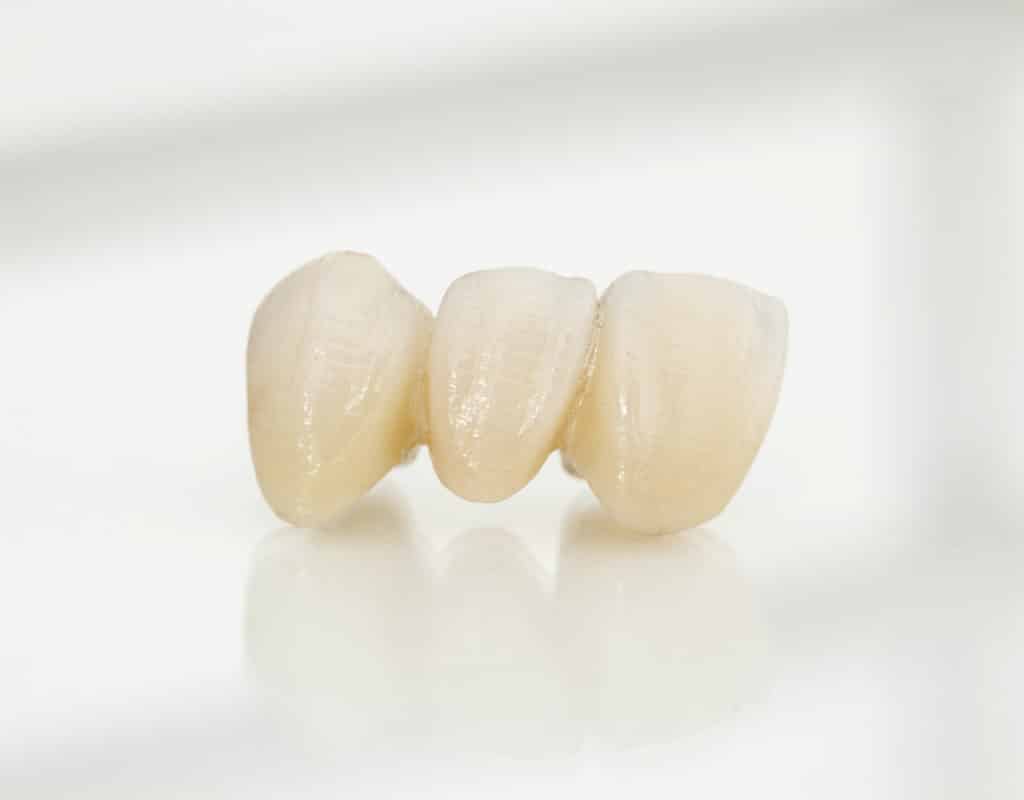
Missing teeth is a common problem among millions of people. Whether you have lost a baby tooth and a permanent tooth never came in, or suffered trauma resulting in a missing tooth, or maybe old age caused one of your teeth to badly break or fall out. No matter the reason, Bismarck Advanced Dental and Implants have seen it all and will give you the information and treatment needed to get your vibrant smile back to normal.
Dental bridges are a common solution to missing teeth and are used to fill in the gaps apparent in the smile. A bridge consists of a false tooth (aka pontic) and is held together by two other abutment teeth on either side. These three teeth together are a dental bridge. Dental bridges can be made of different types of materials but are usually gold or porcelain. The type of material used may depend on your dental situation, your preference, and your dentist’s recommendation. With that said, many patients prefer porcelain since it has a natural look of a tooth and blends in.
Common Types of Dental Bridges
Part of the discussion with your dentist about the possibility of a dental bridge will consist of which type of bridge is best suited for you and your situation. There are a total of four different types of dental bridges and each one is used for different reasons and varying circumstances. The four types of dental bridges include: traditional, Maryland, implant supported, and cantilever.
Traditional
Traditional dental bridges consist of a false tooth and are held together by dental crowns cemented on each of the abutment teeth. This is the most popular type of dental bridge and is ideal for patients with healthy teeth on either side of the gap.
Maryland
Maryland dental bridges are very similar to traditional but instead of dental crown, Maryland bridges use a type of framework usually made out of metal to hold the false tooth and the abutment teeth together. These bridges are also ideal for patients with healthy teeth on either side of the gap.
Implant-supported
Implant-supported bridges use dental implants instead of dental crowns to hold the bridge in place. With this option an implant is placed for each missing tooth. While this method is considered on the most stable options of dental bridges it can be a time consuming process and take several months and surgeries for the entire system to be placed. This is an ideal solution for patients who do not have stable teeth on either side of the gap.
Cantilever
Cantilever dental bridges use a dental crown that is cemented to only one of the natural abutment teeth. For this bridge, only one healthy natural tooth is needed as an abutment.
Why Would I Ever Need A Dental Bridge?
While missing teeth and gaps in your smile may not always bother you, these gaps can cause several issues other than a changed smile such as trouble with pronunciation, movement of your other teeth, changes with your bite, and difficulty chewing. Dental bridges provide an effective and affordable solution so you can have your smile back.
Advantages of Dental Bridges
Tooth loss is very common and affects people of all different ages. If you have suffered tooth loss, deciding on which solution is best for you can be difficult even with advice from your dentist. Dental bridges have many advantages over other solutions, including lower costs, no invasive surgery required, and faster recovery time. Bridges can also last several years with proper dental care and regular check-ups. With bridges, patients can eat and drink freely while they may be more limited with implants. Implants can become unstable and have issues in the future, but bridges don’t.
Contact Bismarck Advanced Dental and Implants for more information or to schedule an appointment for you dental bridge today!
